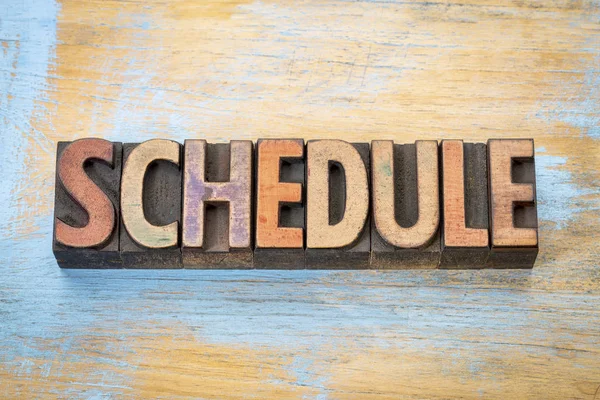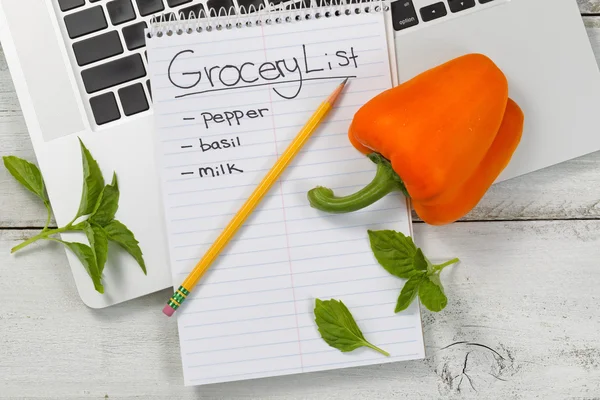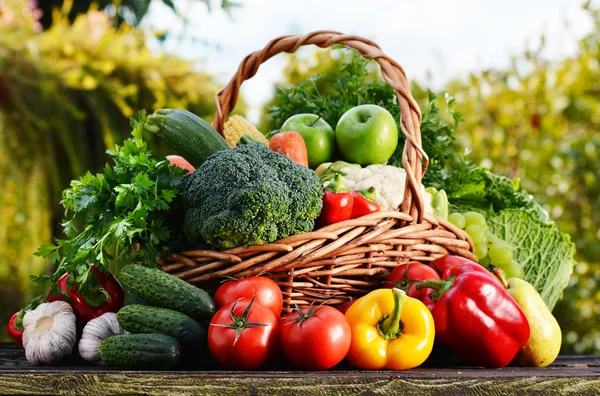
How to create a weekly meal plan to save time and money
If you're like most people, you've probably found yourself standing in front of your fridge at least once this week, wondering what on earth you're going to make for dinner. It's a common problem: we're all busy, and it can be tough to find the time and energy to plan out meals and shop for groceries. But meal planning doesn't have to be a chore. In fact, it can actually save you time and money in the long run.
That's right – meal planning can be a game-changer. By taking a little bit of time upfront to plan out your meals and create a grocery list, you'll be able to shop more efficiently, reduce food waste, and make healthier choices. Plus, you'll save yourself the headache of having to decide what to make every single day. Who wouldn't want that?
If you're ready to give meal planning a try, you're in the right place. In this blog post, we'll walk you through the steps to create a weekly meal plan that works for you. We'll cover everything from assessing your schedule and preferences to sticking to the plan and making adjustments as needed. You'll be a meal planning pro in no time!
Step 1: Assess your schedule and preferences

Before you start planning your meals, it's important to assess your schedule and preferences. This will help you determine the best approach to meal planning that works for you.
First, take a look at your calendar and consider any events or activities that might impact your meal planning. For example, if you have a busy work schedule or have evening commitments a few days a week, you might want to plan for more simple meals on those days. On the other hand, if you have a more relaxed schedule, you might have more time to prepare more elaborate dishes.
It's also important to consider your food preferences. What types of foods do you enjoy eating? Do you have any dietary restrictions or allergies to take into account? By including a variety of meals that you actually enjoy eating, you'll be more likely to stick to your meal plan.
One helpful tip is to use a calendar or planner to map out your meals for the week. This will allow you to see at a glance what you have planned and make any necessary adjustments. You could also use a spreadsheet or a meal planning app to organize your meals and ingredients.
By assessing your schedule and preferences, you'll be able to create a meal plan that works for you and your lifestyle. This will make it easier to stay on track and ensure that you're eating meals that you actually enjoy.
Step 2: Set a budget

Once you've assessed your schedule and preferences, it's time to set a budget for your groceries. This is an important step in meal planning, as it will help you make informed choices about the types of meals you can afford to prepare.
To calculate your budget, consider the cost of ingredients for the meals you've planned as well as the number of people in your household. You may also want to factor in any additional expenses, such as eating out or buying convenience foods. Once you have a rough estimate of your budget, you can start making adjustments to your meal plan as needed.
There are several ways to save money on groceries without sacrificing quality or taste. For example, you could try buying in bulk when possible, as this can often save you money in the long run. You might also consider shopping at discount stores or looking for sales and coupons. Another option is to buy generic or store-brand items, which can be just as good as name-brand products at a fraction of the cost.
By setting a budget and finding ways to save money on groceries, you'll be able to create a meal plan that fits your financial needs and allows you to eat well without breaking the bank.
Step 3: Make a list of meals and ingredients

Now that you've assessed your schedule, preferences, and budget, it's time to create a list of meals and ingredients for the week. This will serve as the foundation of your meal plan and help you stay organized as you shop and prepare your meals.
To get started, consider the meals you've planned for the week and make a list of the ingredients you'll need. You might find it helpful to use a spreadsheet or a meal planning app to organize your list. This will allow you to easily see what you need at a glance and make any necessary adjustments.
When choosing recipes, consider using ones that have similar ingredients to save money and minimize waste. For example, if you're making a recipe that calls for bell peppers and another recipe that uses onions, you might be able to use the same peppers and onions for both dishes.
It's also a good idea to include a variety of meals, such as breakfast, lunch, dinner, and snacks. This will help ensure that you're getting a balanced diet and will prevent you from getting bored with your meals.
By making a list of meals and ingredients, you'll have a clear plan for the week and will be well-prepared to shop and cook.
Step 4: Create a grocery list

Now that you have a list of meals and ingredients for the week, it's time to create a grocery list. This will help you stay organized as you shop and ensure that you don't forget any important items.
To create your grocery list, start by reviewing your list of meals and ingredients and adding the items you need to your list. You might find it helpful to organize your list by category, such as produce, meat, dairy, etc. This will make it easier to find items in the store and save you time.
You might also consider grouping items by location in the store. For example, you might place all the items you need from the produce section together, followed by the items you need from the dairy section, and so on. This will help you shop more efficiently and save you time.
If you're using a meal planning app or a shopping list app, you can easily create and manage your grocery list on your phone. This will allow you to take your list with you to the store and check items off as you go.
By creating a grocery list, you'll be well-prepared to shop and will be less likely to forget important items or overspend on unnecessary items.
Step 5: Do the grocery shopping 

Now that you have your grocery list and meal plan in place, it's time to do the shopping. While it may seem like a simple task, there are a few strategies you can use to make your shopping trip more efficient and save time and money.
First, try to shop at off-peak times to avoid crowds and long lines. This will allow you to get in and out of the store more quickly and reduce the risk of getting frustrated or making impulse purchases.
If the store is busy, consider using self-checkout lanes to save time. Just be sure to pay attention to the screen and follow the instructions to avoid errors or delays.
Another option is to use delivery or pickup services, which can save you time and effort. Many stores offer these services for a fee, or you can use a grocery delivery app to have your items delivered to your doorstep.
Regardless of how you choose to shop, it's important to stick to your grocery list to save money and time. Try to avoid making unnecessary purchases or buying items that aren't on your list. This will help you stay on track and avoid overspending.
By following these tips, you'll be able to do your grocery shopping more efficiently and save time and money in the process.
Step 6: Prepare and store the food

After you've done your grocery shopping, it's time to prepare and store the food. This step is important to ensure that your meals are ready to go when you need them and to minimize waste.
To save time, you might consider batch cooking or prepping ingredients in advance. For example, you could chop vegetables or cook grains on the weekend and store them in the fridge or freezer for use throughout the week. This will save you time and effort when it comes to preparing meals.
When storing your food, it's important to use airtight containers to keep it fresh. You might also want to label and date your containers to keep track of what you have and when it needs to be used.
To minimize waste, be sure to follow proper storage guidelines for different types of food. For example, perishable items should be stored in the fridge or freezer, and dry goods should be kept in a cool, dry place.
By preparing and storing your food properly, you'll be well-equipped to stick to your meal plan and make the most of your groceries.
Step 7: Stick to the plan

Now that you've done your grocery shopping and prepared your food, it's time to stick to the plan. This will help you save time and money and ensure that you're eating healthy, balanced meals throughout the week.
One of the keys to sticking to the plan is to remind yourself of the benefits of meal planning. By taking a little bit of time upfront to plan your meals and shop for groceries, you'll be able to save time and money in the long run. You'll also be able to make healthier choices and reduce food waste.
It's also important to be flexible and adapt to change. If you have a busy schedule or unexpected events come up, it's okay to make adjustments to your meal plan. Just be sure to use up leftovers or switch out meals as needed to avoid waste.
Finally, don't be too hard on yourself if you stray from the plan. It's okay to indulge in a favorite meal or treat every once in a while. The key is to balance those indulgences with healthy, planned meals.
By sticking to your meal plan, you'll be able to save time and money and eat well throughout the week.
Step 8: Make adjustments as needed

As you implement your meal plan, you may find that you need to make adjustments along the way. This is completely normal and can be a useful way to stay on track and make the most of your groceries.
There are several reasons why you might need to make adjustments to your meal plan. For example, you might have a change in your schedule, your preferences may change, or you might need to adjust your budget. Whatever the reason, it's important to be flexible and adapt to change.
To make adjustments to your meal plan, you might try using up leftovers or switching out meals as needed. You could also try using ingredients in different ways to add variety to your meals. For example, if you have a lot of vegetables on hand, you might try using them in different recipes or adding them to soups, salads, or smoothies.
Another option is to be open to trying new recipes or ingredients. This can be a great way to add variety to your meals and keep things interesting.
By being flexible and willing to make adjustments as needed, you'll be able to stay on track with your meal plan and make the most of your groceries.
Conclusion
Congratulations on completing your meal plan! By following the steps outlined in this blog post, you should be well on your way to saving time and money and eating healthier meals.
Meal planning can be a game-changer, and it's a skill that anyone can learn. By taking a little bit of time upfront to plan your meals and shop for groceries, you'll be able to save time and money in the long run. You'll also be able to make healthier choices and reduce food waste.
If you're new to meal planning, it might take a little bit of time to get the hang of it. But with practice, it will become easier and more natural. So don't be afraid to give it a try!
If you'd like to learn more about meal planning, there are plenty of resources available, such as meal planning apps or websites. These can be great tools to help you get started and stay on track.
We hope this blog post has helped you get started with meal planning. By following these steps, you'll be able to save time and money and eat well throughout the week.
How to create a weekly meal plan to save time and money
 Reviewed by jadan
on
January 05, 2023
Rating:
Reviewed by jadan
on
January 05, 2023
Rating:
 Reviewed by jadan
on
January 05, 2023
Rating:
Reviewed by jadan
on
January 05, 2023
Rating:




No comments: